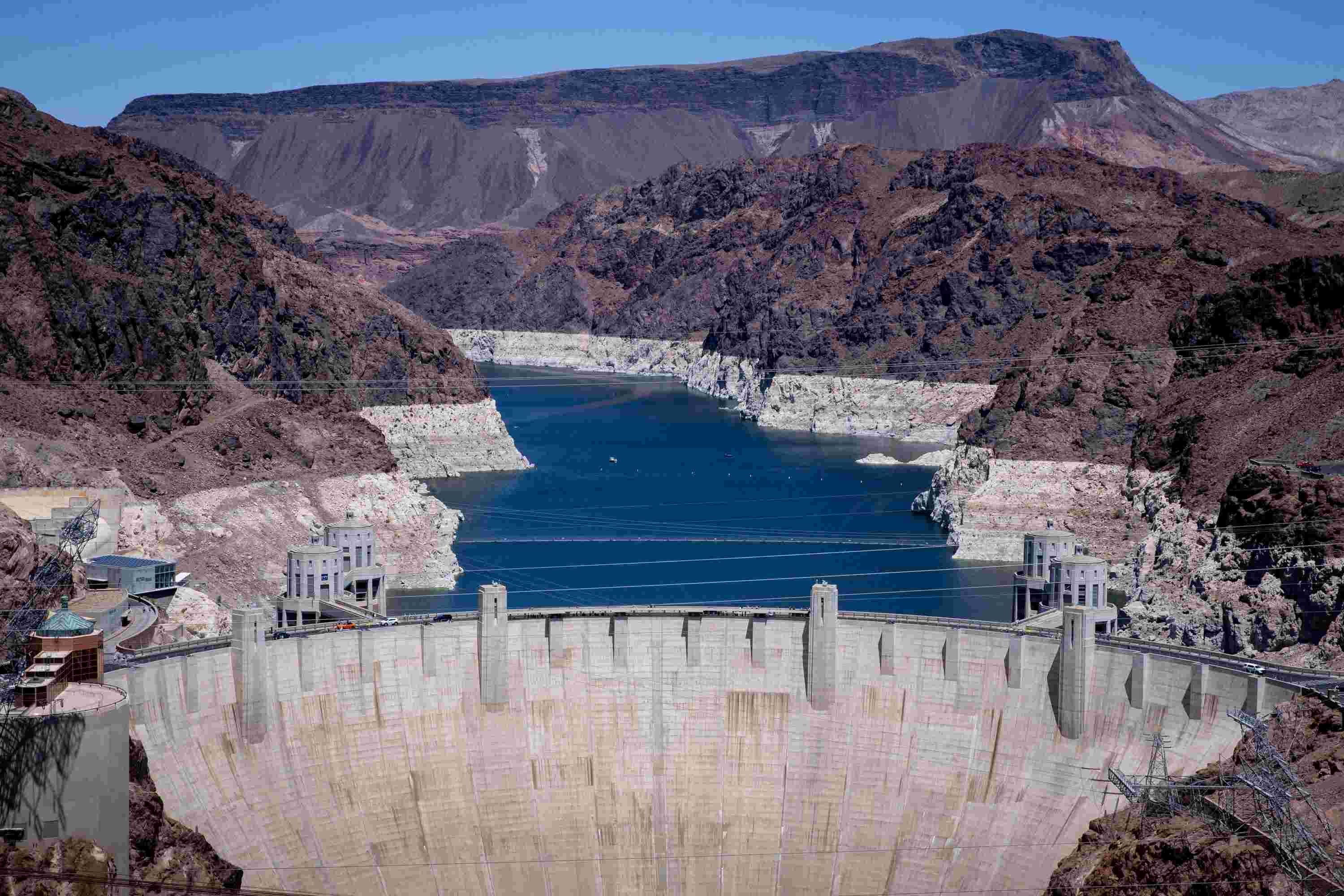
Natural dams are fascinating geological formations that occur when natural events block rivers or streams, creating a barrier that holds back water. These barriers can form due to landslides, volcanic activity, glacial movements, or even the accumulation of debris. Natural dams play a crucial role in shaping landscapes, creating lakes, and influencing ecosystems. They can also pose significant risks, such as flooding if they fail. Understanding these natural wonders helps us appreciate the dynamic processes of our planet. In this post, we’ll explore 36 intriguing facts about natural dams, shedding light on their formation, impact, and the unique environments they create.
Natural Dams: Nature's Unexpected Barriers
Natural dams are fascinating geological formations that occur without human intervention. These barriers can form in various ways, creating unique landscapes and ecosystems. Let's dive into some intriguing facts about natural dams.
-
Natural dams can form from landslides. When a landslide occurs, debris such as rocks, soil, and vegetation can block a river or stream, creating a natural dam.
-
Beavers are nature's engineers. These industrious animals build dams using sticks, mud, and stones, creating ponds that provide habitat for various species.
-
Volcanic activity can create natural dams. Lava flows can block rivers, forming dams that create new lakes.
-
Glacial ice can act as a natural dam. When glaciers advance, they can block valleys and rivers, leading to the formation of glacial lakes.
-
Earthquakes can trigger natural dam formation. Seismic activity can cause landslides or uplift land, blocking water flow and creating dams.
The Impact of Natural Dams on Ecosystems
Natural dams significantly influence the surrounding environment. They can create new habitats, alter water flow, and even affect local climate conditions.
-
Natural dams create new aquatic habitats. The ponds and lakes formed by these dams provide homes for fish, amphibians, and other aquatic species.
-
They can alter water flow patterns. By blocking rivers, natural dams can change the direction and speed of water flow, impacting downstream ecosystems.
-
Natural dams can improve water quality. The still waters behind these dams allow sediments to settle, resulting in clearer water.
-
They can influence local climate. Large bodies of water created by natural dams can moderate temperatures and increase humidity in the surrounding area.
-
Natural dams can support plant growth. The moist environments created by these dams are ideal for various plant species, promoting biodiversity.
Famous Natural Dams Around the World
Some natural dams have gained fame due to their size, beauty, or the unique ecosystems they support. Here are a few notable examples.
-
Attabad Lake in Pakistan. Formed by a massive landslide in 2010, this lake is now a popular tourist destination.
-
Lake Sarez in Tajikistan. Created by an earthquake in 1911, this lake is one of the largest natural dams in the world.
-
Spirit Lake in the USA. This lake was formed by the 1980 eruption of Mount St. Helens, which blocked the Toutle River.
-
Quake Lake in the USA. Formed by a landslide triggered by an earthquake in 1959, this lake is located in Montana.
-
Lake Waikaremoana in New Zealand. Created by a landslide over 2,200 years ago, this lake is surrounded by lush forests and is a popular hiking destination.
The Risks and Challenges of Natural Dams
While natural dams can create beautiful landscapes and habitats, they also pose risks and challenges. Understanding these risks is crucial for managing and mitigating potential hazards.
-
Natural dams can fail suddenly. Unlike engineered dams, natural dams are often less stable and can collapse without warning, leading to catastrophic flooding.
-
They can cause upstream flooding. By blocking rivers, natural dams can cause water to back up, flooding areas upstream.
-
Natural dams can disrupt ecosystems. The sudden formation of a natural dam can alter habitats and displace species.
-
They can impact human settlements. Natural dams can flood agricultural land, homes, and infrastructure, causing significant damage.
-
Monitoring natural dams is challenging. Due to their remote locations and unpredictable nature, keeping track of these dams can be difficult.
The Role of Natural Dams in Geological Studies
Natural dams provide valuable insights into geological processes and history. Studying these formations helps scientists understand past events and predict future changes.
-
Natural dams offer clues about past earthquakes. The formation of these dams can indicate seismic activity in the area.
-
They help scientists study landslides. By examining natural dams, researchers can learn more about the conditions that trigger landslides.
-
Natural dams reveal information about glacial movements. The presence of glacial dams can provide evidence of past glacial activity.
-
They contribute to understanding volcanic activity. Lava dams offer insights into the history and behavior of volcanic eruptions.
-
Natural dams help in climate studies. The sediments trapped behind these dams can contain valuable information about past climate conditions.
The Future of Natural Dams
As climate change and human activities continue to impact the environment, the formation and stability of natural dams may be affected. Understanding these changes is essential for future planning and conservation efforts.
-
Climate change can influence natural dam formation. Changes in precipitation patterns and temperature can affect the likelihood of landslides, glacial movements, and other processes that create natural dams.
-
Human activities can impact natural dams. Deforestation, mining, and construction can destabilize natural dams or increase the risk of their formation.
-
Natural dams can be used for renewable energy. Some natural dams are harnessed for hydroelectric power, providing a sustainable energy source.
-
They can be part of conservation efforts. Protecting natural dams and the ecosystems they support can help preserve biodiversity.
-
Research on natural dams is ongoing. Scientists continue to study these formations to better understand their behavior and potential impacts.
Interesting Facts About Natural Dams
Here are some additional fascinating tidbits about natural dams that highlight their diversity and importance.
-
Natural dams can be temporary or permanent. Some natural dams last for centuries, while others may only exist for a few years.
-
They can create unique landscapes. The lakes and ponds formed by natural dams often have distinct shapes and features.
-
Natural dams can be found on every continent. These formations occur in diverse environments, from mountains to plains.
-
They can support rare species. The unique habitats created by natural dams can be home to rare and endangered species.
-
Natural dams can be tourist attractions. Many natural dams and the lakes they create are popular destinations for hiking, fishing, and boating.
-
They inspire scientific curiosity. The formation and impact of natural dams continue to intrigue scientists and nature enthusiasts alike.
Nature's Wonders in a Nutshell
Natural dams are fascinating. They form through landslides, lava flows, or glacial activity. These barriers can create stunning lakes and unique ecosystems. Some famous natural dams include the Attabad Lake in Pakistan and the Quake Lake in Montana. They remind us of nature's power and unpredictability.
Natural dams also have practical uses. They provide water storage, flood control, and hydroelectric power. However, they can pose risks if they fail. Understanding these formations helps us appreciate their beauty and manage their impact.
Next time you see a natural dam, think about its history and the forces that shaped it. These natural wonders are more than just barriers; they're stories written by nature itself. So, whether you're a nature lover or just curious, natural dams offer a glimpse into the Earth's dynamic processes.
Was this page helpful?
Our commitment to delivering trustworthy and engaging content is at the heart of what we do. Each fact on our site is contributed by real users like you, bringing a wealth of diverse insights and information. To ensure the highest standards of accuracy and reliability, our dedicated editors meticulously review each submission. This process guarantees that the facts we share are not only fascinating but also credible. Trust in our commitment to quality and authenticity as you explore and learn with us.


